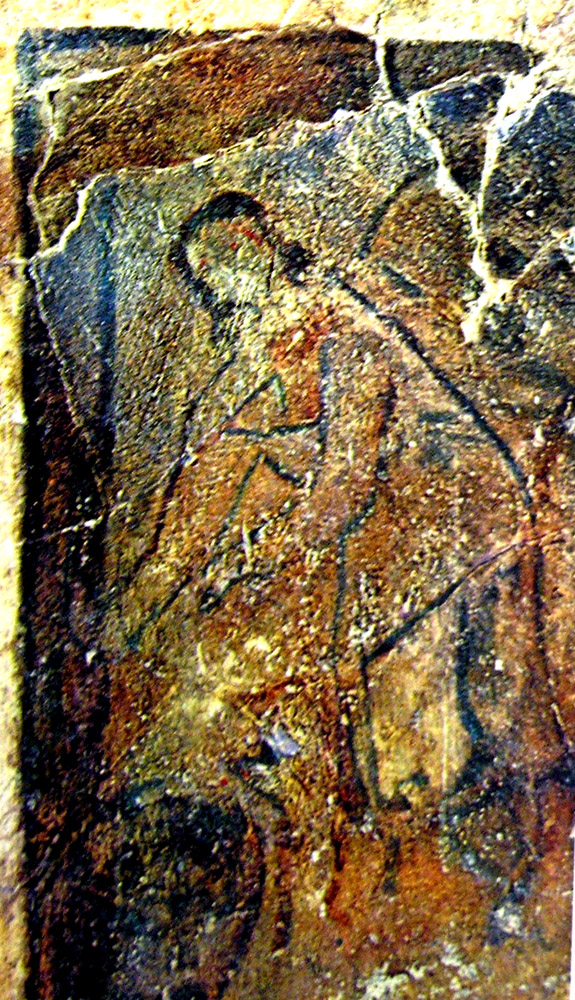
Annunciation at the Spring (or Samaritan Woman)
Circa 250
Wall painting
The church at Dura-Europos
Among the images in the church's baptistery is this painting of a woman holding a rope attached to a water vessel. Most scholars have taken the woman to be the Samaritan who "had five husbands," who met Jesus at the well of Jacob in Samaria. This identification relies primarily on her being at a well, whose water can correspond to the water of baptism that will wash the initiates in this room. Further, the point of the story is the conversion experienced by this woman and her fellow villagers, who "ourselves have heard him, and know that this is indeed the Saviour of the world."
Some scholars, however, take the image to represent the "Annunciation at the Spring," a popular subject in early images. This iconographic type is based on the Annunciation account in the Protevangelium of James (§ 11): Mary goes outside to fill a pitcher and hears a voice that says, "Hail, thou who hast received grace; the Lord is with thee; blessed art thou among women!" She looks all around and cannot see whoever it was that spoke those words, so she goes back to work in her house. There, an angel gives her the rest of the message, "Fear not, Mary; for thou hast found grace before the Lord of all, and thou shalt conceive, according to His word."
Peppard (155-201) is a strong exponent of this identification. He dismisses the "Samaritan Woman" theory on the grounds that all other early images of that episode include Jesus with the woman, whereas in "Annunciation at the Well" images she will be alone. In this painting not only is she alone but there is a large empty space behind her that Peppard says can represent "the bodiless voice" that Mary hears in the Protevangelium. He also notes that there appears to be a five-pointed star on the woman's torso, which could symbolize the new child in her womb. The star, he suggests, is what subsequent images repositioned to the shoulder of her mantle, and the water vessel survives all the way into the Renaissance art as a vase with flowers.
Read more about images of the Annunciation.
Read more about images of Jesus and the Samaritan Woman at the Well.
Source: this page at Wikimedia Commons.